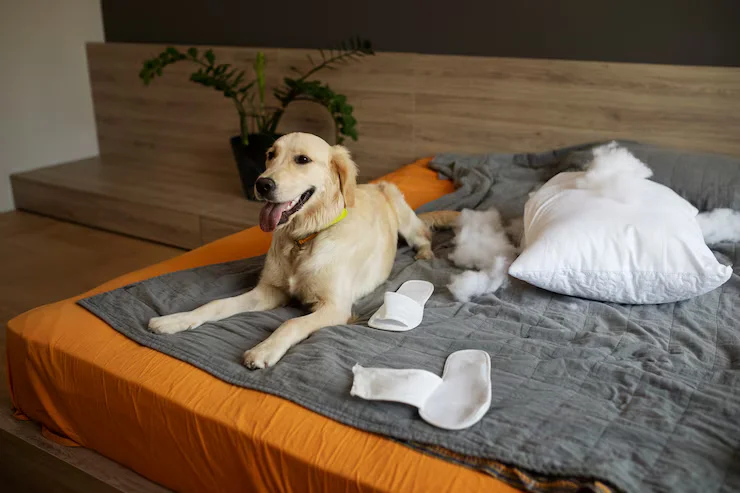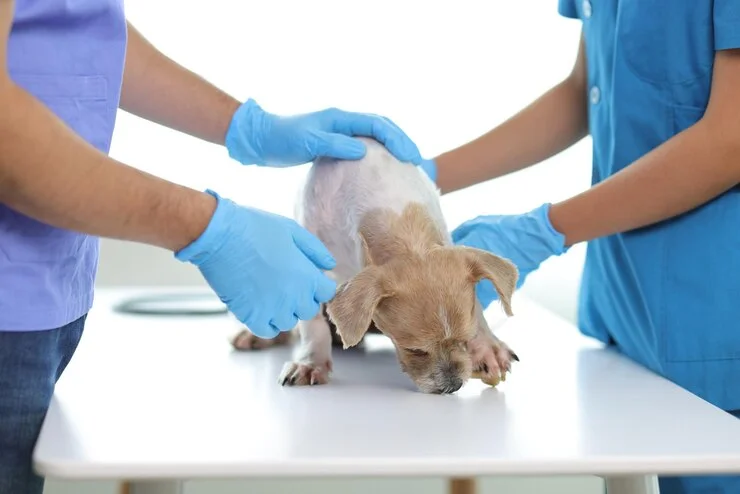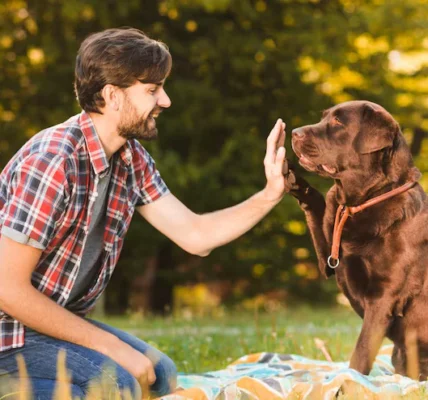Pets cannot speak with words but they communicate with actions and changes. Every sound or movement tells a story. As a pet parent you should learn to watch these stories. Some signs may seem small, but they can mean a big danger. When something feels wrong, quick action is key. First aid can save your pet’s life. Delayed action can lead to damage or more pain. In this guide we will explain how to recognize danger signs in pets. If your pet shows any of these symptoms, you should not wait. Call your doctor and get help right away. Awareness is care and care saves lives. Let’s learn how to notice these important signs.
Frequent vomiting or diarrhea
An episode of vomiting can be triggered by food or stress. But frequent vomiting or persistent diarrhea is serious. These issues lead to a misfortune of water and body salts. If parchedness is not treat.
 ed expeditiously, it can be deadly. You ought to be more stressed if you see blood in your stool or upchuck. Offer assistance must be given right away to a drowsy pet that keeps tossing up. Puppies and cats lose liquids exceptionally rapidly. Never utilize human medicines to avoid heaving. These can make it more regrettable or cause harm. Continuously call your specialist and clarify the side effects. Your pet may require liquids or tests to decide the cause.
ed expeditiously, it can be deadly. You ought to be more stressed if you see blood in your stool or upchuck. Offer assistance must be given right away to a drowsy pet that keeps tossing up. Puppies and cats lose liquids exceptionally rapidly. Never utilize human medicines to avoid heaving. These can make it more regrettable or cause harm. Continuously call your specialist and clarify the side effects. Your pet may require liquids or tests to decide the cause.
Swollen or hard stomach
Your pet’s belly should be soft, not round and hard. If the abdomen looks larger than usual or feels tight, it could be serious. A hard abdomen may be painful to the touch. Dogs in particular can have a condition called bloat where gas fills the stomach. They may try to vomit but nothing comes out. Bloat is fatal and requires urgent surgery. A bloated belly in cats can mean liver, kidney or heart problems. You should never squeeze the stomach as this can cause more damage. Keep your pet calm and go to the vet. This is not something that can be waited for.
Seizures and Sudden Movements
A seizure is a sudden shaking or falling of the body. Your pet may fall on its side and move its legs uncontrollably. Some pets foam at the mouth or lose control of urine or stool. A short seizure may pass, but two or more in a row is a major risk. Never put your hands in your mouth during a visit. Your pet will not be able to swallow the tongue but may reflexively bite. Remove the surrounding hard objects and keep the lights low. Write down how long the visit lasted and what happened before it. Your doctor will need this information to give you the right care.
Trouble Passing Urine or Stool
If your pet tries to urinate but nothing comes out, this is a big problem. This can be caused by inflammation or injury to the kidney. A blocked bladder is very common and very dangerous in male cats. If not treated quickly, the bladder can burst. Symptoms include crying while trying to push for too long or licking the area a lot. Pets may also refuse to eat or appear lethargic. Never try to force a pet to go to the toilet. Your doctor may need to insert a tube or give you a pain pill. This cannot be fixed at home.

Eye injury or swelling
Eyes are sensitive and heal slowly. If one eye is red, swollen, or tearing, it needs care. Your pet may close the eye or paw at it. This could mean a scratch or a foreign object. Do not use home drops or touch the eye. Cats and dogs can go blind due to untreated eye problems. Cloudy eyes or changes in eye color also need to be checked. Get your pets inside as soon as possible. If neglected, vision loss is often permanent.
Heat stroke warning signs
Heatstroke occurs when pets are left in hot, unventilated areas. A parked car on the sun porch or a long run in the summer can cause this. Symptoms include gasping, vomiting, and falling gums. Dogs with short noses overheat quickly. Wet their paws gently and move to a cool place. Use fans and cool towels on the abdomen. But if your pet seems better, you should definitely go to the vet. Organs may continue to deteriorate after the heat is gone.
Symptoms of poisoning
Pets love to sniff and chew on random things. Many human foods and household items are toxic to them. Chocolate grapes, onions and pain pills are common risks. Bleach soaps and cleaners are also dangerous. Symptoms of poisoning include vomiting, pale gums, or palpitations. Do not spay your pet unless told to do so by a vet. Call the poison control number or your doctor right away. The sooner the body gets rid of the poison, the better the outcome.
Immediate Vet Contact
Call your vet if your pet acts differently or shows any new symptoms. Don’t wait to see if it goes away. Better to ask before regretting later. Note when the markings started, what your pet ate and any changes around the house. A pet first aid kit helps with basic care. It should contain a cloth, clean water, soft tape and doctor’s contact information. Keep it in a dry place that is easily accessible.

Safety Measures
Prevention is better than cure. Give your pet clean food and water daily. See a doctor for regular shots and checkups. Check the weighted teeth and ears weekly. Do not leave wire pellets or sharp tools within reach. Know your pet’s normal habits so that changes are easily noticed. Give the groom a bath and play with your pets to stay close. Healthy pets are active and happy.
Conclusion
Your pet depends on you for care and safety. Emergency symptoms are often triggered by small changes. Listen and trust your gut. If something feels off, don’t wait. Your quick reaction could mean your pet’s life. Be aware, be prepared and always show love through action. The best defense for your pet is knowing when to seek assistance.





























1 COMMENTS